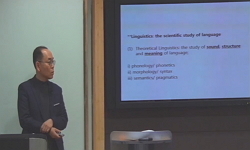목적: 본 연구는 상완골의 측정을 기존의 2차원 측정 방법에서 3차원 측정 방법으로 전환하기 위한 도구를 제안하고, 신뢰도가 향상된 측정치를 기반으로 진단 및 치료가 이루어질 수 있는 ...
http://chineseinput.net/에서 pinyin(병음)방식으로 중국어를 변환할 수 있습니다.
변환된 중국어를 복사하여 사용하시면 됩니다.
- 中文 을 입력하시려면 zhongwen을 입력하시고 space를누르시면됩니다.
- 北京 을 입력하시려면 beijing을 입력하시고 space를 누르시면 됩니다.
https://www.riss.kr/link?id=A109202596
- 저자
- 발행기관
- 학술지명
- 권호사항
-
발행연도
2024
-
작성언어
Korean
- 주제어
-
KDC
514
-
등재정보
KCI등재
-
자료형태
학술저널
- 발행기관 URL
-
수록면
291-300(10쪽)
- DOI식별코드
- 제공처
- 소장기관
-
0
상세조회 -
0
다운로드
부가정보
국문 초록 (Abstract)
목적: 본 연구는 상완골의 측정을 기존의 2차원 측정 방법에서 3차원 측정 방법으로 전환하기 위한 도구를 제안하고, 신뢰도가 향상된 측정치를 기반으로 진단 및 치료가 이루어질 수 있는 기반을 마련하기 위한 연구이다.
대상 및 방법: 개발한 소프트웨어 앱에서는 양측 상완골 간의 차이를 정량화하기 위해 반전과 정합(registration) 기능이 구현되었고, 상완골의 형태를 측정하기 위해 주성분 분석을 통한 정렬 및 길이 측정, 부피 측정, 상완골두와 상완골관절융기에서 최대 단면적과 그 위치 측정, 마크업(markups) 간의 길이 및 각도 측정 기능이 구현되었고, 상완골 근위부의 특징점인 상완골두와 결절사이 고랑을 자동으로 추출하는 기능이 구현되었다. 이를 통해 3차원 상완골 모델 40개의(남 20개, 여 20개) 상완골의 길이, 부피, 상완골두와 상완골관절융기에서 최대 단면적과 그 위치를 측정하였다.
결과: 개발한 소프트웨어를 통해 측정한 값은 동일한 상완골에 대해 항상 같은 측정치를 제공한다. 그리고 이전에 측정하지 않았던 새로운 파라미터인 상완골두와 상완골관절융기에서 최대 단면적의 위치가 남녀, 좌우 관계없이 비슷한 비율을 가진다는 것을 발견하였다.
결론: 본 연구에서 개발한 소프트웨어 앱을 통해 3차원 환경에서 객관적이고 신뢰할 수 있으며, 자동화된 방법으로 상완골을 측정하고 형태를 분석할 수 있었다. 본 연구의 결과가 실제 임상에 적용된다면 객관적인 측정 방법을 기반으로 진단과 치료가 이루어질 수 있어 진단 및 치료의 결과가 향상될 것으로, 또한 정형외과의 다른 분야로도 확장이 가능할 것으로 기대한다.
다국어 초록 (Multilingual Abstract)
Purpose: This paper proposes a method to convert the measurement of the humerus from conventional two-dimensional (2D) to three-dimensional (3D) measurements and apply it to clinical environments for diagnosis and surgery to improve results. Material...
Purpose: This paper proposes a method to convert the measurement of the humerus from conventional two-dimensional (2D) to three-dimensional (3D) measurements and apply it to clinical environments for diagnosis and surgery to improve results.
Materials and Methods: In the developed software application, reflection and registration functions were implemented to quantify the difference between both sides of the humerus. Consistent measurements of the humerus were taken by defining the reference axis based on the Principal Component Analysis and aligning the humerus model with respect to the reference axis. Subsequently, the length, volume, the largest cross-sectional area in the head and condyle region, the position ratio of the largest cross-sectional area compared to the longitudinal length in the head and condyle region, and length and angle measurement between markups determined in the head and condyle region were examined. In addition, the automatic extraction of the head and groove, landmarks of the humerus proximal, was implemented. This study applied 40 humerus models (20 males and 20 females) to evaluate the measurements and automatic landmark-determination methods for humerus.
Results: The measurements by this software application could provide consistent measurements of the same humerus. In addition, the position ratio of the largest cross-sectional area compared to the longitudinal length in the head and condyle region, proposed through this study, provides a similar ratio regardless of gender and side.
Conclusion: The software application developed in this study could measure the humerus and analyze its shape using an objective, reliable, and automatic method in a 3D environment. If the results of this study are applied to real clinical trials, diagnosis, and surgery could be conducted based on objective measurements, and improved results would be achieved. In addition, the study method could be expanded to other fields, such as orthopedics.
동일학술지(권/호) 다른 논문
-
- 대한정형외과학회
- 강찬(Chan Kang)
- 2024
- KCI등재
-
근골격계 질환의 증식치료(prolotherapy)에 대한 체계적 문헌 고찰
- 대한정형외과학회
- 고광표(Kwang-Pyo Ko)
- 2024
- KCI등재
-
- 대한정형외과학회
- 박진영(Jin-Young Park)
- 2024
- KCI등재
-
당뇨병성 족부 골수염의 수술적 치료에서 항생제가 함유된 인산이칼슘 탈수화물/β-인산삼칼슘의 유용성
- 대한정형외과학회
- 김태호(Tae-ho Kim)
- 2024
- KCI등재





 DBpia
DBpia







